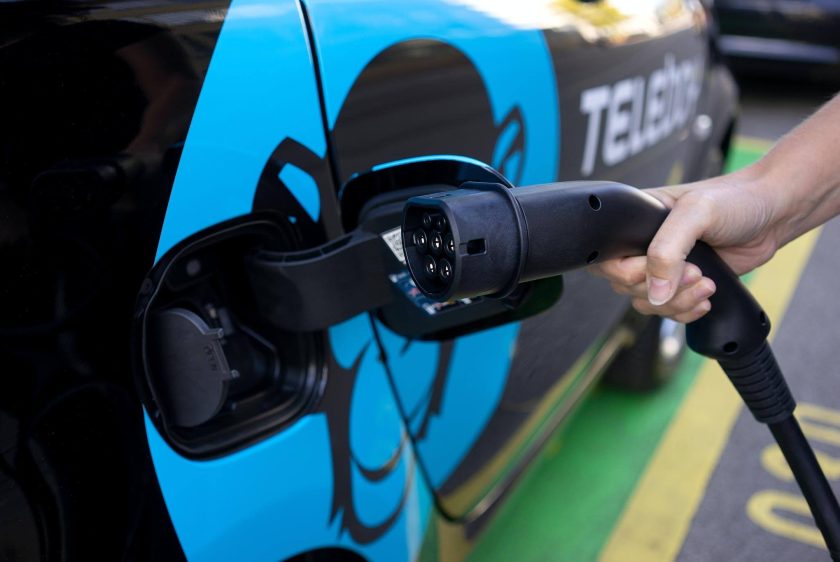What kind of EV chargers do I need for my business?
It is proven that EV drivers spend money at the EV charging site host establishments while they wait for their car to charge. Not only do EV Charging site hosts get more customer revenue, but they have the added revenue stream from selling electricity at their chargers and additional connection fees for charger users.
There are two primary types of public chargers, Level 2, and Level 3. The main differences between these types are the price of the charging hardware, level of infrastructure required to support the chargers, compatibility with cloud point-of-sale platforms, and the time it takes to charge.
Impower Connection’s charging consultants can help you navigate all the options. We represent the leading EV charger manufacturers, and we can educate you on the features and benefits of each one. Contact us for your free EV charging strategy session at (817) 341-0191.
If you have a hotel, entertainment venue, apartment complex, office space or fleet, Level 2 chargers may be the right fit because they enable drivers to get a significant charge in 4-8 hours, without the need to move the car in about 30 minutes like they would at a Level 3 fast charger. Level 2 chargers are a much lower cost option which is a great benefit if you need to equip an entire fleet or a parking lot for a destination resort.
If you are located on an interstate highway and want to attract those looking for a fast charge, Level 3 chargers are the way to go. A Level 3 charger or DC fast charger (DCFC) can charge and near-empty vehicle in about 30 minutes, making them ideal for people that are going somewhere and just stopping on the way.
Level 2 chargers are a great amenity to attract overnight guests to your hotel because they encourage drivers to stay over night to get their EV charged. Restaurants or retail shops stand to benefit from EV drivers that are simply stopping to charge.
How much does it cost to buy EV chargers for my business?
Level 3: Level 3 chargers are currently only available for commercial use because they operate at 480 volts with a power range of 100+ amps. Level 3s use a direct current (DC) which enables them to charge much faster than AC (alternating current). Typically, Level 3 chargers have a wider range of compatibility and deliver the fastest charge which makes them the most convenient for the consumer.
This convenience comes at a cost. The charger’s higher power consumption requires a higher upfront cost for the charger and the electrical infrastructure to support it.
They will nearly always require new transformers and added utility services. Level 3 chargers are typically located in public places so the general public can use them to get charged quickly and be on their way. Although pricier, Level 3s provide additional long term benefits such as durability.
EV drivers look for chargers that are compatible with their EV. Compatibility is based on the connector ports on the charger and the vehicle. There are many different types of connectors that may be compatible with Level 3 chargers, including Tesla adapter, CCS, and CHAdeMO in the U.S.
EV drivers should get familiar with their vehicle by reading the owner’s manual. As a business you want to have chargers that offer the greatest range of compatibility so you can attract as many EV drivers to your site as possible. CCS is becoming the standard for Level 3s in the U.S.
Level 2: Level 2 chargers are a workhorse at a much lower cost than Level 3s and they are getting faster as technology evolves. Businesses such as workplaces, movie theaters, apartment complexes, hotels, and casinos can get the most value from Level 2 chargers because of the time it takes for them to fully charge a vehicle – about 4 to 8 hours. They offer convenience for EV drivers in that you do not have to go outside to move your car in about 30 minutes, as required with Level 3s. Level 2 chargers are ideal for fleets that have local routes and have ample down time shifts to get recharged. casino gamblers, overnight hotel guests, apartment dwellers or employees working at least a four-hour shift. Level 2s are an attainable option due to their affordable cost, currently $1,000-$5,000 per unit. They offer a much faster charge than Level 1 chargers at a fraction of the cost of a Level 3.
Unlike Level 3 chargers, they do not need special high-power infrastructure because the charger runs on an AC (alternating current), the same type of current supplied by electrical grids, with a 208 to 240 voltage with a power range of 12-80 amps.
Level 2 chargers are compatible with the J1772 and the Tesla Adapter in the U.S. The cost difference between Level 1 and 2 chargers is minimal when comparing the price large price increase from a Level 2 and a Level 3.
Level 1: Level 1 chargers are the slowest and cheapest. For these reasons, they are usually found in homes including multi-family complexes where vehicles are meant to park overnight. They plug into a standard, AC 120-volt outlet in the U.S. If you have a short daily drive, you may be able to charge at home most of the time, and all you may need is an extension cord.
This charger’s lower electricity consumption, results in a very slow charge of only 2 to 5 miles an hour. It could take 30 hours to charge enough to go 105 miles. A benefit of this charger is that it runs with a J1772 connector in the U.S. which is the standard connector that comes with most EVs, so there is no additional purchase necessary.
What are the best brands of chargers?
There are many brands of EV chargers on the market. While many are similar, some have unique features such as the ability to be branded with the site host’s logo, and the ability to be programmed to charge at the lowest cost time frame which is a nice feature for hotel guests that need a charge overnight.
Nearly all chargers have required features such as cloud network connectivity, weather-rated for outdoor use, ADA compliant, manufacturer’s warranty, commercial grade, and compatibility with the universal J1772 connector or the CCS for fast chargers.
Leading manufacturers include:
ABB ‐ ABB is a technology leader in electrification and automation across many industries and has been in business for more than 130 years. ABB specializes in smart, reliable solutions that are emission-free and accessible to everyone, everywhere.
ABB has a wide range of chargers with specialties for multi-family complexes, workplaces, retail, commercial and industrial fleets, heavy duty trucks and public transport. They manufacture Level 1, 2, and 3 chargers and will soon be launching vehicle-to-grid (V2G)
chargers which are also known as bi-directional.
Blink – Blink is a global company and has been manufacturing chargers for more than 10 years. They focus on making EV charging accessible. Blink’s diverse product line-up has some of the most advanced equipment in the industry. Their products offer a full range of deployment configurations, including single and multiple cord pedestals, individual and paired wall-mount chargers, DC fast, and even single-family residential charging stations. Some of their chargers offer cord control ability. Blink offers a variety of chargers for regions of the world such as the Americas, Europe, the Middle East, and India.
Tritium – Tritium has been in the automotive industry for 20 years and specializes in chargers for retail and hospitality, workplace, dealerships, heavy commercial, network operators and commercial fleets.
The company prides itself on its customer service and engineering prowess. Tritium focuses on engineering chargers to endure environmental conditions and have longer lifespans. This is a great benefit because the longer it lasts, the greater the return on investment for the owner.
Freewire Technologies – Freewire focuses on design aesthetics and innovative ultrafast charging to enable rapid transition to electrification. They offer fully‐integrated scalable and flexible solutions to deliver energy to reliably meet demand at the grid edge and beyond. Their technology helps bring power to your site without upgrading traditional energy infrastructure.
Freewire manufactures two chargers, the Boost 150 and Boost 250. The Boost 150 has integrated energy storage, efficient power conversion technology, and software designed to lower energy costs and be deployed quickly at a lower cost since it has built‐in power storage and can run on existing low‐power infrastructure. It can charge a vehicle with 100 miles of driving power in 10 minutes.
BreezEV – BreezEV is based in Cary, Illinois. They specialize in Level 2 chargers requiring 240V outlets and have options for mounting on walls or on pedestals. Their chargers are made for multi‐family residential complexes, municipalities, retail and commercial locations.
JuiceBar – JuiceBar was founded in 2009 and is known for designing products that are optimized to enhance the user’s experience with the goal of enabling mass adoption. JuiceBar supports advanced manufacturing in the U.S. which enables the company to control the supply chain and processes, thereby reducing supply chain issues.
The History of EVs
The first successful electric vehicle in the U.S. was developed by in 1890 William Morrison, a chemist from Des Moines, Iowa. It was a six-passenger car with a top speed of 14 miles per hours. Though regarded as simply an electrified wagon or carriage, it was notable because it sparked interest in electric vehicles.
It was an impressive advancement from the horse and buggy and was appealing due to its simple quiet driving nature without pollutants. Electric-powered vehicles had their peak popularity during the early 1900s and accounted for one third of the vehicles on the road during this era. As they grew in popularity, innovators, including Thomas Edison, took notice and worked to improve batteries.
Unfortunately, due to the underdevelopment of charging infrastructure and the popularity of Ford’s gasoline powered Model T, charging infrastructure was never orchestrated nationwide. Electric cars continued to exist, but development became a low priority without infrastructure to support the sale of these vehicles. One example of an EV in the mid-1900s was the NASA lunar rover which was used during the 1971 moon landing.
In 1997, the first hybrid, the Toyota Prius was mass produced for the year 2000. In 2006, the Silicon Valley startup TESLA got the attention of other automakers. Since then, EVs have risen in popularity because of their impact on air quality and climate, innovative technology, ability to reduce dependence on foreign oil, reduced maintenance costs and inconsistent gas prices.
Can a Tesla charger charge other kinds of vehicles?
Yes, a non-Tesla EV can use a Tesla charger that is not a fast or supercharger using a J1772 connector. It is possible for a non-Tesla EV to use a fast charger with the additional Lectron
Tesla-to-J1772 charging adapter up to 48 amps and 250 volts or Lectron Tesla-to-J1772 adapter up to 40 amps and 250 volts, which both start at $149.99 on lectron.com.
Different types of vehicles have different charging ports, and these are based on where the car was manufactured, North America, Europe or Japan.
The CCS (Combined Charging System) connector is common on vehicles manufactured in North America and Europe while the CHAdeMO (CHArge de Move) connector is common on Japanese-manufactured vehicles. Teslas require a special connector compatible with their superchargers. To put it in simple terms, every electric vehicle besides Tesla has a J1772 connector and every Level 1 and 2 charging station uses the AC single-prong J1772 connector. It is often called the “J-Plug.” Unlike Level 1 and 2 chargers, Level 3 DCFCs have three possible connectors: the CCS (Combined Charging System), the CHAdeMO, which is the official standard in Japan, but can be used for cars such as Nissan and Mitsubishi (dependent on your car type and manual), and Tesla, which has the same connector for their Level 1, 2 and DC fast chargers.
What is OCPP Software?
OCPP (Open Charge Point Protocol) is a communication protocol used to manage electric vehicle charging stations. It allows a central system (e.g. a charging network operator) to remotely monitor and control the charging stations in its network, and enables the charging stations to report their status and send usage data back to the central system. OCPP is an open protocol, which means that it is freely available for anyone to use and implement. It is widely used in the electric vehicle charging industry, and is supported by many charging station manufacturers and charging network operators.







